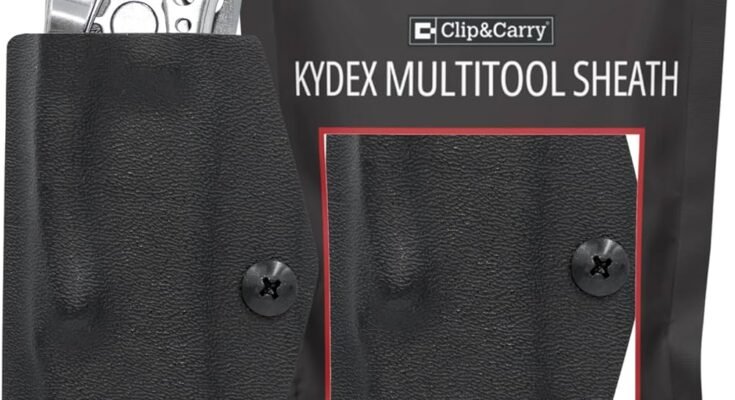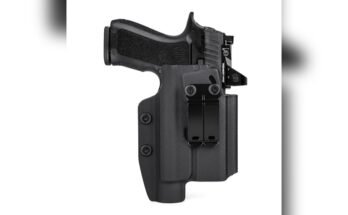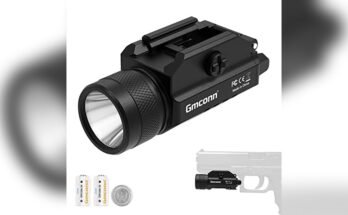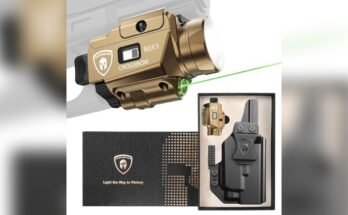If you carry daily, you already know gear takes a beating. I’ve worked with holsters in training, range days, and day-to-day carry, and I’ve seen them age in real time. Yes, a holster can wear out over time. Materials break down, retention changes, edges fray, and small parts fail. In this guide, I’ll explain why that happens, what to watch for, and how to extend your holster’s life so you can carry with confidence. Let’s make sure your setup stays safe, comfortable, and reliable.

Source: community.usconcealedcarry.com
What Actually Wears Out On A Holster
Holsters fail in predictable ways. Knowing the weak spots helps you prevent surprises.
- Retention points lose bite. Friction-fit areas and trigger guard lockups relax with use.
- Hardware loosens or corrodes. Screws, posts, rivets, and clips can back out or rust.
- Edges and mouth deform. Reholstering and pressure can collapse soft holster mouths.
- Finish and lining break down. Suede, foam, or fabric liners compress and peel.
- Belts loops and clips fatigue. Plastic clips crack, metal clips bend, leather loops stretch.
From my experience, retention degradation sneaks up first. You’ll notice a softer draw and a duller “click” on reholster with many polymer rigs.

Source: www.ebay.com
Why Holsters Wear: Materials, Use, And Environment
Different holsters age in different ways. Your habits and climate play a big role.
- Leather. Natural fibers relax with heat and moisture. Leather molds well but can stretch, absorb sweat, and collapse if not reinforced.
- Kydex and similar polymers. Retain shape well, but can crack at stress points, especially around the trigger guard and belt clip holes.
- Nylon and fabric. Comfortable and light, but stitching can pop and the mouth can fold under pressure.
- Hybrid designs. Comfort pads compress over time, backing delaminates, and fasteners loosen at the shell interface.
What speeds wear:
- Sweat and humidity. Salt accelerates corrosion and softens leather.
- Heat and UV. Hot cars and direct sun can warp polymer and dry leather.
- Grit and dust. Fine particles act like sandpaper on retention surfaces.
- Frequent reholstering and training. Every rep adds micro-wear, especially on friction-fit designs.
- Poor belt support. A soft belt forces the holster to flex and fail early.
How To Inspect Your Holster In Two Minutes
A quick check after each range day can save you a headache.
- Test retention. Insert your unloaded gun and give a gentle shake over a padded surface. It should not fall out. Adjust screws if equipped.
- Look at the mouth. Make sure it stays open and aligned for safe, one-handed reholstering.
- Check hardware. Inspect screws and posts. Add thread locker if they keep backing out.
- Scan stress points. Look for cracks near the trigger guard, clip mounts, and sight channel.
- Examine the belt interface. Ensure clips or loops hold the belt firmly and aren’t bent or cracked.
- Confirm trigger coverage. The trigger must be fully covered from every angle.
I keep a tiny screwdriver and a few spare screws in my range bag. Tightening after a long session has become a habit.
Maintenance And Storage That Extend Lifespan
Simple care goes a long way.
- Clean regularly. Wipe sweat and dust after wear. Use a damp cloth for leather and mild soap for polymer. Dry fully.
- Protect leather. Use leather conditioners sparingly to prevent drying and cracking. Avoid soaking.
- Re-tension. Adjust retention screws a quarter turn at a time. Add a dab of blue thread locker.
- Rotate holsters. If you carry daily, alternate between two rigs to reduce constant stress.
- Store smart. Keep away from direct heat. Avoid hot car dashboards. Use a cool, dry spot with airflow.
- Pair with a real gun belt. A stiff belt reduces flex, wear, and printing.
When To Replace Your Holster: Clear Red Flags
Safety comes first. Replace the holster if you see these signs.
- Trigger not fully covered or coverage shifts during movement.
- Weak or no retention even after adjustment.
- Deformed mouth or collapsed body that makes reholstering unsafe.
- Cracks at the trigger guard or clip mounts.
- Loose, stripped, or missing hardware you cannot secure.
- Belt clip or loop that no longer locks onto the belt.
- Excessive squeak, rub, or sharp edges that cut clothing or skin.
A good rule I use: if I have to think twice about safety or retention, it’s time to retire it.
Holster Material Lifespan: What To Expect
Lifespan depends on quality, frequency, and environment. Typical ranges from field use and industry guidance:
- Leather. One to five years of steady use. Reinforced-mouth designs last longer with care.
- Kydex and similar polymers. Two to seven years, often more if the hardware is maintained and stress cracks are addressed early.
- Nylon and soft fabric. One to three years, depending on stitching and reinforcement.
- Hybrid. Two to five years; watch the backing for compression and delamination.
Premium brands with better hardware and thicker material tend to last longer. Budget rigs often fail first at the clip or screw posts.
Fit, Safety, And The Hidden Cost Of Wear
A worn holster affects more than looks.
- Draw consistency. Changing retention alters your draw stroke timing and grip.
- Safety during reholster. A soft or collapsed mouth can drag on the trigger.
- Concealment. Loosened clips and stretched loops cause sag, print, and hot spots.
- Pistol finish. Grit inside the holster can mar the slide and sights.
I once chased a weird click during practice only to find a cracked screw post on a polymer holster. The shell was shifting a hair each draw. That tiny movement changed my grip and slowed my first shot. Small wear, big impact.
Common Mistakes That Kill Holsters Early
Avoid these habits to extend life.
- Leaving the rig in a hot car or on a sunny dashboard.
- Over-tightening retention screws until posts crack.
- Storing leather in sealed plastic bags where moisture lingers.
- Using a fashion belt instead of a purpose-built gun belt.
- Skipping cleaning after sweaty summer carry or dusty range sessions.
- Mixing one holster with multiple gun models “close enough” in size.
Cost-Effective Upgrades And Replacement Strategy
You don’t need to break the bank to stay safe.
- Keep spare hardware. Extra screws, posts, and clips are cheap and extend service life.
- Add foam wedges and wings. These reduce torque and hot spots, helping the holster ride stable and wear less.
- Buy two of the same model. Rotate for comfort and training, and you always have a ready backup.
- Timebox inspections. Put a quarterly reminder on your calendar to check retention and hardware.
- Track training volume. High-rep users should plan earlier replacement due to accelerated wear.
Frequently Asked Questions Of Can A Holster Wear Out Over Time?
How Long Does A Typical Holster Last?
Most quality holsters last two to five years of regular carry. Heavy training, sweat, and heat can shorten that. Good maintenance can extend it.
Can I Repair A Cracked Kydex Holster?
Small cracks near non-critical areas might be managed by replacing hardware and easing retention. Cracks near the trigger guard or clip mounts are deal-breakers. Replace the holster.
Does Leather Holster Stretching Mean It’s Done?
Not always. Light stretching is normal and can improve fit. If the mouth collapses or retention vanishes, it’s time to retire it.
Are Universal Or One-Size Holsters Safe Long Term?
They can work for casual use, but dedicated, model-specific holsters are safer and wear better. Universal designs often lose consistent retention faster.
How Often Should I Clean My Holster?
Wipe it after sweaty carry or range days. Do a deeper clean monthly. Keep grit and salt off the retention surfaces and hardware.
Do Metal Clips Last Longer Than Plastic?
Often yes, especially under heat and pressure. Plastic can crack over time. Quality spring steel clips tend to hold shape longer.
Will A Gun Belt Really Reduce Holster Wear?
Yes. A stiff gun belt supports the holster, reduces flex, and limits the stress that leads to cracks and clip failure.
Wrap-Up And Next Steps
Holsters are like tires. They’re consumable, and that’s okay. With regular checks, simple cleaning, and the right belt, you can double their useful life and carry with confidence. If your holster can’t hold the gun safely or cover the trigger, replace it right away. Your draw, your comfort, and your safety will all improve.
Take five minutes today to inspect your setup. Tighten what’s loose, clean what’s dirty, and make a plan to rotate or replace as needed. Want more field-tested tips? Subscribe, share your questions in the comments, and explore our other gear guides.
Watch This Video on Can a holster wear out over time?



